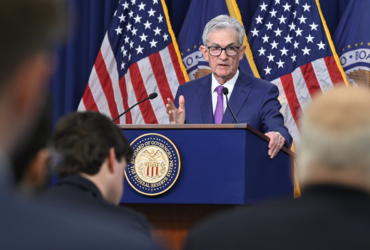The Producer Price Index (PPI) for final demand in March rose by a mere 0.2%, indicating a slower pace of increase compared to February’s 0.6% rise. This modest uptick, the smallest since a decrease observed in December, was below the expectations of economists who had projected a 0.3% rise. The report from the U.S. Bureau of Labor Statistics highlights a potentially easing inflationary environment, providing a slight respite amid recent economic concerns.
Key Insights from the March PPI Report:
1. Annual Increase Surpasses Expectations: The year-over-year index climbed to 2.1%, surpassing February’s 1.6% and marking the highest level since April 2023. Despite being a rise, this was still below the anticipated 2.2%, suggesting a moderated inflation trajectory.
2. Services Sector as the Inflation Driver: The increase in the PPI is mainly attributed to the services sector, where prices rose by 0.3%. This sector continues to drive inflationary pressures, highlighting ongoing cost challenges in services even as goods prices experience a downturn.
3. Decline in Goods Prices: Offering a contrasting picture, the index for final demand goods slightly declined by 0.1%. This drop suggests reduced inflationary pressure from goods, which could be a positive sign for overall price stabilization.
4. Core Prices Show Modest Increase: Core PPI, which excludes volatile food and energy prices, rose by 0.2%, down from February’s 0.3%. This is the lowest monthly increase since prices were flat in December, with the year-over-year core index rising to 2.3%. Although this monthly figure was better than expected, the annual rate exceeded forecasts, indicating persistent underlying inflationary pressures.
This PPI report was a breath of fresh air for the market, especially following a series of economic reports that had painted a mixed picture. Just two weeks prior, a robust jobs report and a higher-than-expected consumer inflation reading had heightened concerns about ongoing inflation and potential tightening measures by the Federal Reserve. Since producer prices are often seen as a precursor to consumer prices, the mild increase in the PPI may signal upcoming relief in consumer inflation levels.
Although the report offers a momentary sigh of relief, the dynamics within the PPI—particularly the persistent rise in services prices—suggest that inflationary pressures are not entirely subdued. Economists and policymakers will need to continue monitoring these trends closely to gauge whether this moderation is the beginning of a sustained trend or merely a temporary reprieve.
As discussions around monetary policy continue, the Federal Reserve and other economic stakeholders will likely consider these nuanced developments in their strategic planning. With a careful balance, they aim to foster economic stability without igniting further inflationary fires or stifling growth.





